Common issues
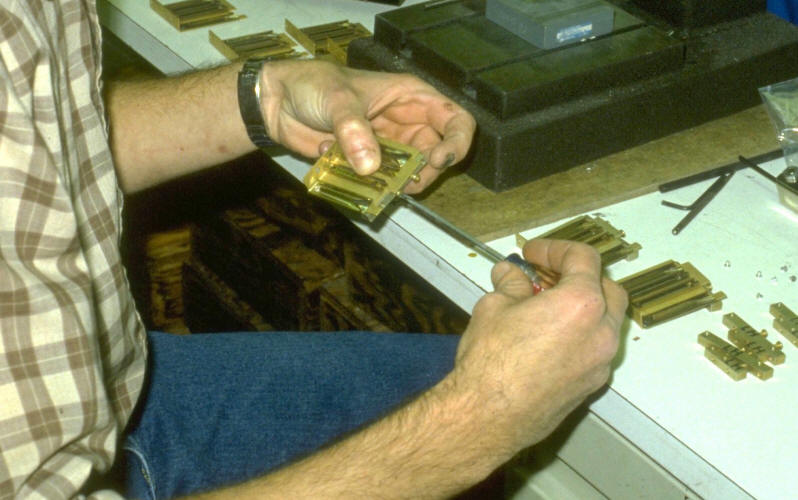 |
| Awkward, inefficient |
Manual screwdrivers are adequate for infrequent tasks, but generally insufficient for typical assembly tasks. They tend to be awkward and require too many wasted motions for this purpose. (Note in the above photo the absence of a fixture and the poor use of workspace, which need to be addressed regardless of the type of screwdriver used.)
Common options for improvement
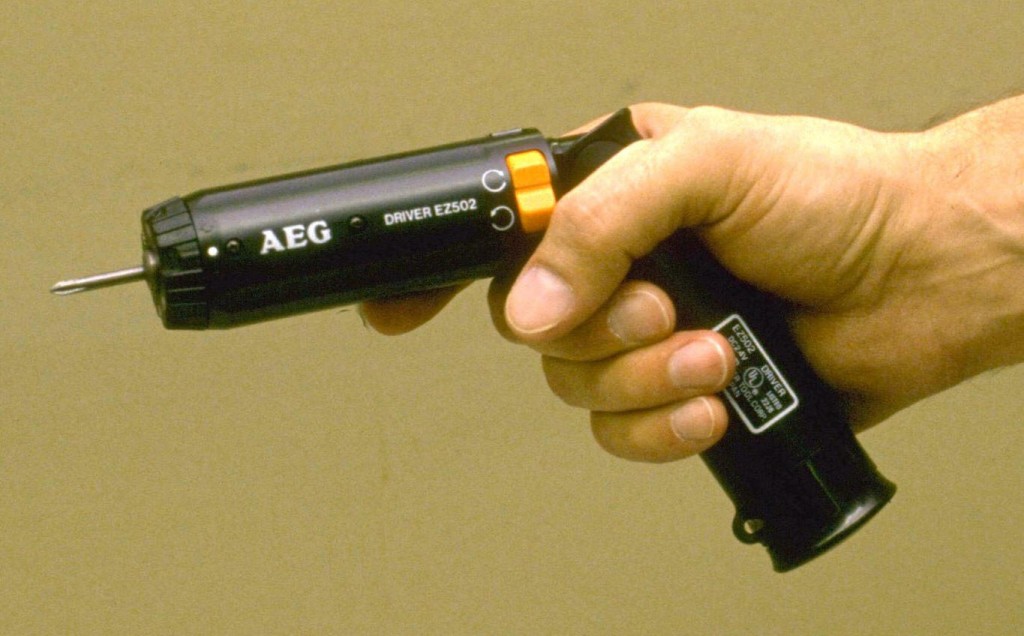 |
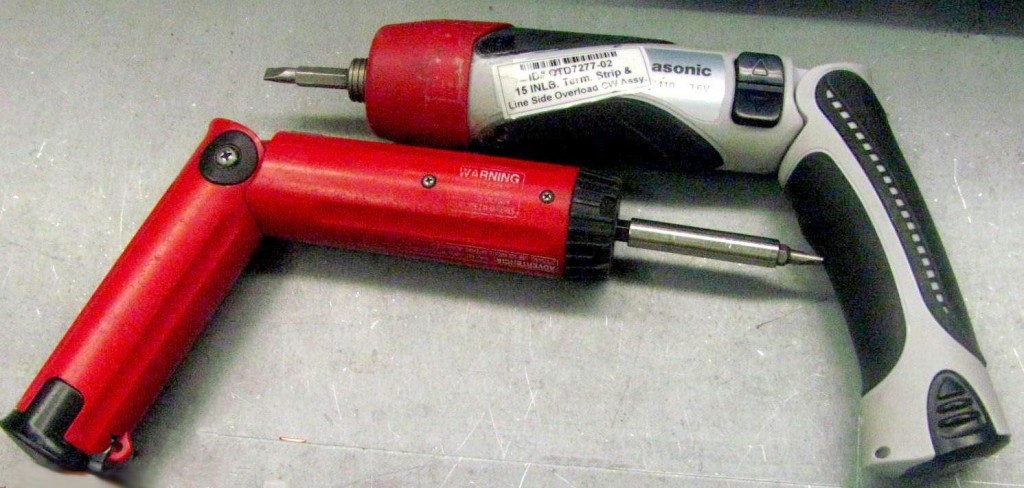 |
| Cordless electric screwdrives, hinged grips | |
Cordless electric screwdrivers are normally better than manual screwdrivers for many assembly operations and similar uses. Note that these tools typically incorporate hinged grips to keep the wrists in optimal position regardless of the orientation of the screw.
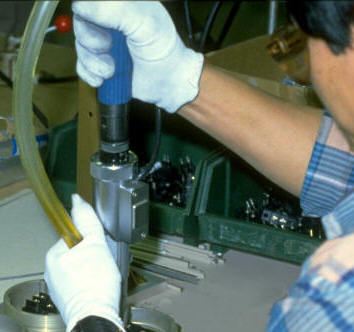 |
| Automatic screwdriver |
Automatic screwdrivers are often used in high volume assembly operations. The version above incorporates (a) a tube screw feeder, (b) an engagement trigger (pressing down activates the screwdriver), and (c) an overhead counterbalance with torque reaction control.
 |
| Tube screw feeder (willismanufacturing.com) |
The example above shows a pistol grip screwdriver with a tube style automatic screw feeder.
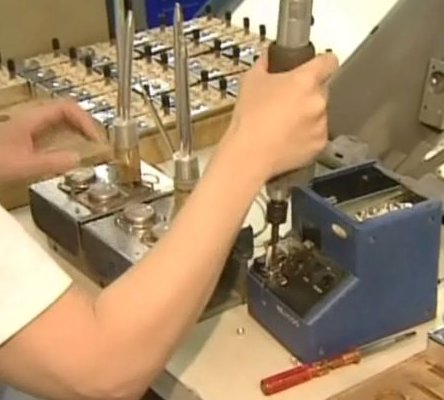 |
 |
| Pick screw from feeder | Insert into product (see video clip) |
This type of screw feeder requires a separate motion to pick the screw compared to the tube feeder. However, eliminates the many motions that are needed for manual picking of screws from a box and is incredibly fast (see video clip).
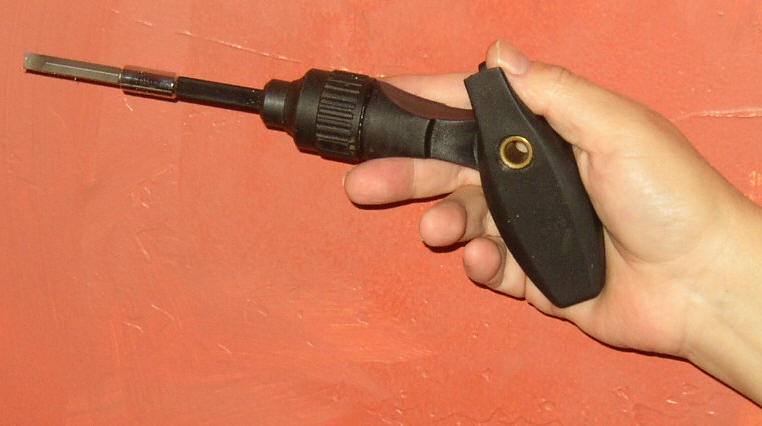 |
| Pistol grip manual screwdriver |
Manual screwdrivers have their place. When high exertion is needed, the pistol grip is very helpful.
